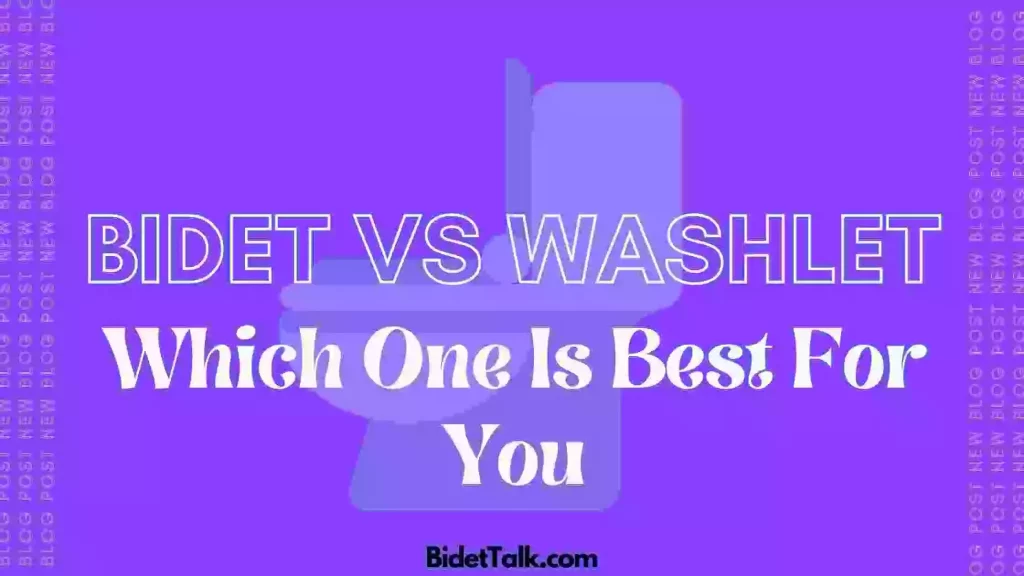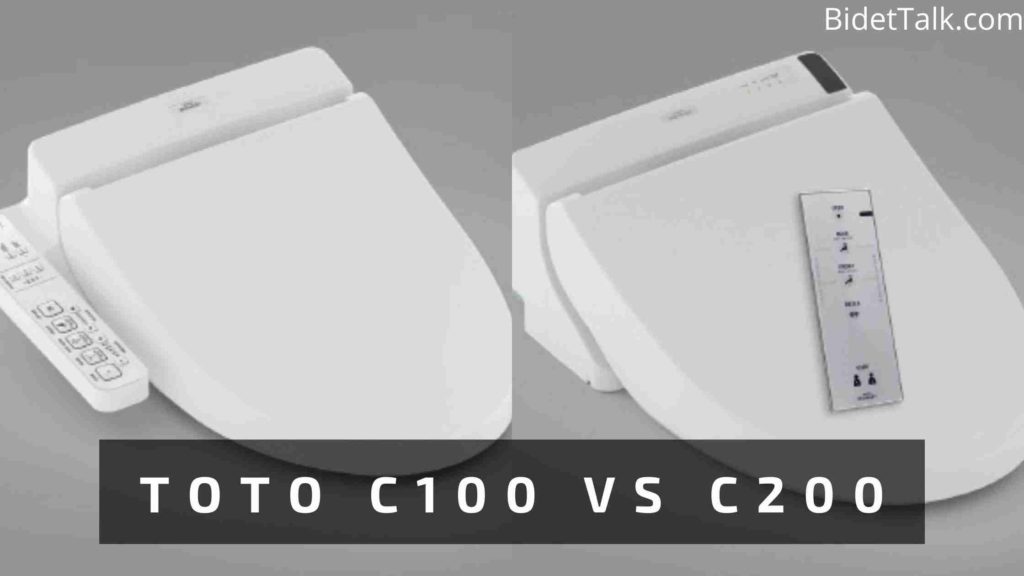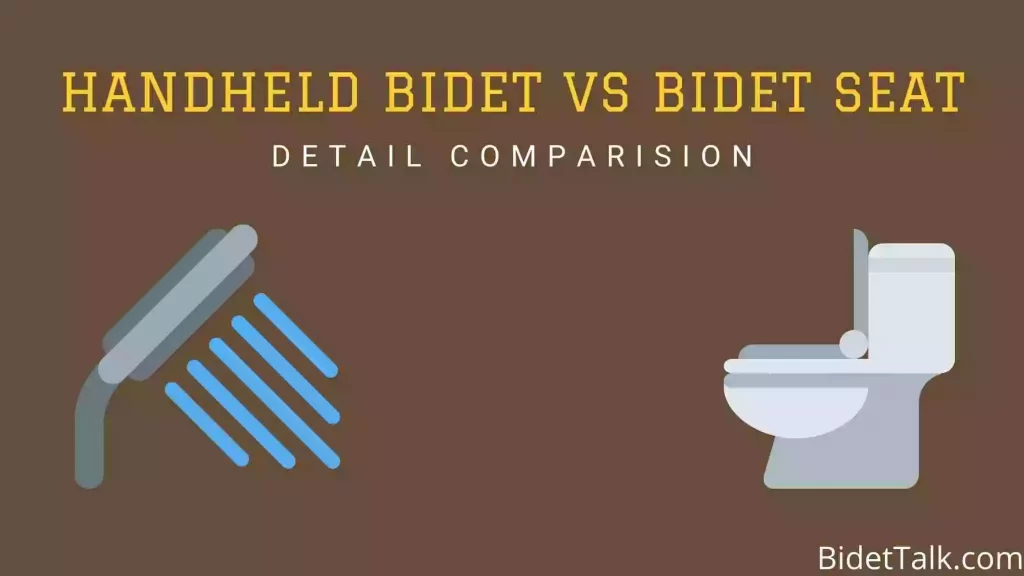Talking about the standard bathroom fixtures that we all know like – sink, tub, shower, taps, toilet, and then more fixtures tend to raise a lot of questions.
Today, let’s take the case in point: bidet vs washlet.
These two lesser-known toilet-related fixtures bring us a lot of confusion.
How to use a bidet? (Especially common question among those visiting Europe for the 1st time and unsure about why two toilets are there!!)
What is a washlet? What is a bidet toilet and how it works?
Do we need a bidet? (And if we do, how expensive is a bidet?) What’s the difference between a bidet and a washlet?
So many questions are there, but but but … We have all the answers in this article.
Let’s have a look first at what is a bidet and a washlet.
What is a Washlet?
Washlets, also called bidet toilet seats, help you clean yourself after using the toilet, without using toilet paper.
It is a toilet seat that is affixed on top of the toilet, replacing the standard toilet seat.
A washlet allows the user to urinate, poop, and cleanse themselves on the same fixture without moving or repositioning themselves.
A washlet can be used by both, men and women.
Washlets come in many styles, some with heated seats, warm air dry, customizable settings for the wash, auto opening and closing of the seat, auto-flush when the lid closes, deodorizers, and self-cleaning systems (depends on the bucks you spend on it!!).
They are helpful to keep your toilet working well since there’s no toilet paper clogging up the line.
Choose the ones that are most desirable for your needs as not every washlet has all these features.
What is a Bidet?
A Bidet is a type of standalone sink or fixture that looks like a toilet.
Bidets are separate fixtures typically installed next to the toilet, with a standard faucet.
It uses water with a hand-held sprayer, faucet, or spray from the bottom of the bowl straight up to wash and clean the nether regions.
A bidet is not a toilet itself so, it is not designed to accept urine, stools (poop), or tissue paper (toilet paper).
After using a bidet, it must be cleaned and sanitized.
Difference Between Bidet And Washlet
Most of the people consider bidet and washlet the same.
But this is not true.
Let us know what is the differences between Bidet and Washlet.
❖ Functionality Difference
● The Washlet is not a complete toilet unit, but instead a high-tech seat that gets mounted on top of an existing toilet.
There is the self-cleaning nozzle, which is sensor or remote-operated as part of the jet spray wand, and it cleanses the wand by passing through a sheet of water as it extends and retracts.
The wand is built from antimicrobial plastic, which fights the growth of microorganisms.
● While bidets look something like a low sink or a toilet with a faucet.
These bidets are separate fixtures that sit right next to the toilet.
So, you will need to use the toilet, then stand up and move over to the bidet.
❖ Installation
● Washlets are designed to be a DIY installation as it takes just a few minutes.
If you have a new toilet installed at the same time, then your plumber can certainly hook it up.
They fit onto your toilet instead of a traditional toilet seat and place a T-connector to tap into your toilet’s water supply.
You must have a GFCI outlet nearby, as your washlet requires electricity.
● Bidets are needed to be installed by a professional.
They need new supply and waste lines so they come off your existing plumbing.
The plumber will need to split off the new lines to the bidet.
It will be set and sealed into place, and then the plumbing lines are connected.
The length of time to install a bidet varies depending upon the location.
The more the pipes need to travel, the longer the installation will take.
❖ Costs
● Washlets have a huge range of prices depending on the level of accessories you want.
A simple, cold-water washlet is around $100.
A complete seat with heat and blow-dry, auto-lid flush, and night light cost about $1,000.
Most of the people pay between $350 and $500 for their washlet and install it themselves.
If you need an electrical outlet installed, the price will be higher.
The cost of installing a new GFCI outlet is around $120 – $200.
The average price of a washlet is between $470 and $700.
● Bidets have a starting cost of around $300 – $500 on average but have a much higher installation cost.
The installation cost will be an additional $500, making the total about $1,000.
This can go higher if you need designer colors and styles or if the plumbing needs to be run farther.
However, you avoid using toilet paper, which saves you on average $180 a year, even with the additional water usage.
❖ Comfortability
The comfort level of a washlet or bidet depends on who is using it.
● Washlets come in so many styles.
Some of them are more comfortable than others.
●For using a bidet, you must have to move from the toilet to the next fixture, get on it, and lower yourself down.
Bidets are often lower than a toilet so using them may be difficult or painful for people with mobility issues.
The bidet faucet allows you to adjust things like temperature and pressure, which can allow you to better customize your experience.
In many cases, a washlet is considered more likely in terms of comfort because you can include heating for the seat or adjust the spray type.
Bidets allow you to alter the water pressure manually, but you have to sit directly on cold porcelain.
❖ Temperature
● Washlets are connected to your toilet’s water supply, so they would be available with cold water.
If your model is having a heater, it warms the water at the time of use.
However, this is not always reliable because the heater may wear out over time.
● Bidets are plumbed separately from the toilet and can use both hot and cold water, allowing you to adjust the temperature of the fixture to your preference.
Washlet Or Bidet: Which One Should You Choose And Why?
After reading the whole thing at once, we might get confused about which one we should prefer to choose?
But if you ask me, I prefer washlets or bidet seats over traditional bidets.
I feel that the comfort, convenience, and style these units provide are worth the price.
Plus, they’re much easier to use and easy to install than a traditional bidet.
If you’re thinking about replacing your current toilet, bidet seats are great options too.
On the other hand, if you are thinking to remodel your bathroom, prefer the look and feel of a bidet that’s separate from the toilet, and if you want simple cleansing action, a classic bidet is a perfect fit.
In many ways, bidet toilets are more sanitary than the average toilet.
For example, some bidets include a premist feature that sprays the bowl with water before use to help reduce waste build-up.
After each use, some washlets even mist the bowl with an eco-friendly disinfectant which is called eWater+.
Various luxury bidets also have automatic seats or remote controls, which minimizes your overall contact with the toilet by encouraging touch-free operation.
Bottom line
Washlets and bidets both come with their own advantages and disadvantages that can benefit multiple people.
Washlets can be more convenient at a lower cost but don’t offer as high a level and quality of cleanliness.
Bidets are a little less convenient and higher in cost but offer a much better experience for cleaning up after going to the Loo.
It really depends on what you and your family need the most.
If you need an inexpensive and easy way to save some money and save the planet (It should be the priority!!), then purchasing a washlet attachment is the recommended route.
If you have the space and the budget, or perhaps need to take care of a health issue, then a bidet is the best way to go.



